The Landing: Air Line Pilot Chronicles the Evolution of a Profession
Highlighting ALPA’s past eight and a half decades
Since its inaugural issue on April 5, 1932, Air Line Pilot has been a successful way to reach ALPA members with priority issues of the day as well as give timely updates on the Association’s long-term endeavors. Today, the compilation of photos, articles, and information also serves as a chronological de facto archive for the union. ALPA pilot leaders and staff continue to produce the magazine with these goals in mind: updating the members on important issues and defining how the particular period of time be remembered as a part of ALPA’s rich history. In honor of the Association’s 85th anniversary, we highlight just a few of the covers from the past eight and half decades that bring to light notable events in the airline industry as well as capture a brief evolution of the Air Line Pilots Association, International.

30s
ALPA was founded on July 27, 1931. The 1930s were the formative years of the airline piloting profession, marked by hazardous working conditions and frequent instances of pilot pushing, compelling airline pilots to band together to demand safer working conditions and call for better aviation infrastructure to improve safety and operational consistency. As aircraft capability evolved, the focus of flying during this period transitioned from delivering mail to transporting both passengers and cargo.
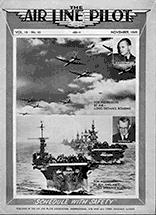
40s
World War II introduced a surplus of postwar transport aircraft and a throng of trained and tested pilots looking for employment. After years of stagnation, domestic airlines were eager to hire these aviators. Meanwhile, pilots from around the globe created the International Federation of Air Line Pilots’ Associations to address the future of international air travel and have a voice within the newly created International Civil Aviation Organization.

50s
The decade introduced modern jet transports, which ushered in a new era for aviation. ALPA established a formal framework for its safety structure—what would later become the largest nongovernmental aviation safety structure in the world. Clancy Sayen, ALPA’s president, proposed the idea of pilot immunity in reporting programs to identify operational risks—the first steps toward the Aviation Safety Action Program and Flight Operations Quality Assurance programs of today. The Association also promoted the idea of pilots participating in the certification of new aircraft.
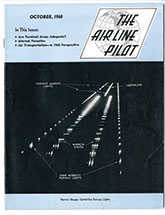
60s
With the seeds of jet travel firmly rooted, the airline industry expanded exponentially despite a host of new safety challenges, including evolving concerns such as pilot fatigue. Due in part to ALPA’s lobbying efforts, U.S. President John Kennedy signed legislation making aircraft hijacking and other violent acts aboard an aircraft a federal crime. ALPA’s All-Weather Flying Committee adopted a policy calling for the use of head-up displays on airliners.
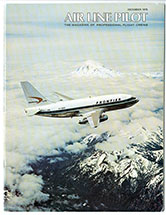
70s
ALPA initiated studies to help identify the effects of wind shear on aircraft performance. After years of ALPA lobbying, regulators established airport certification requirements and mandated the installation of ground proximity warning systems on airliners. During the end of the decade, U.S. President Jimmy Carter signed the Airline Deregulation Act of 1978, removing governmental regulation of commercial aspects of the airline industry and forever changing it.

80s
After more than two decades of urging by ALPA, the FAA announced a runway pavement grooving directive. The Association helped secure traffic alert and collision avoidance systems for FAR Part 121 operations, passenger seatbelt signs, and crew resource management training. In March 1989, Eastern pilots launched a sympathy strike in support of members of the International Association of Machinists, who went on strike against Eastern Airlines and Frank Lorenzo, ALPA’s arch nemesis. The effects of deregulation, combined with an economic recession and high fuel costs, proved to be too much for industry leaders like Braniff and Pan American, which shut down their operations.

90s
Several significant accidents compelled airline industry stakeholders to look more closely at aircraft features, including the B-737’s rudder control system, following the Flight 427 crash near Pittsburgh, Pa. In 1995, ALPA was awarded the Collier Trophy for its involvement in the design of the B-777. Most significantly, the Association’s One Level of Safety campaign paid off, bringing FAR Part 135 operations with seats for more than nine passengers under the same rules as FAR Part 121 operations. In 1997, the Canadian Air Line Pilots Association merged with ALPA, bringing 10 new pilot groups and 2,700 Canadian pilots into the Association.
2000s
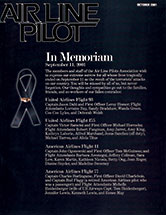
2001
On September 11, terrorists hijacked four U.S. airliners, using them as weapons to damage the Pentagon and destroy the World Trade Center, killing nearly 3,000 innocent victims in the process. These devastating attacks placed a new emphasis on passenger and cargo screening and other preemptive security measures. In response, the Association organized its Security Task Force, developing, lobbying for, and helping to implement dozens of security-enhancing initiatives.
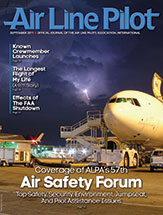
2011
ALPA’s safety structure was enhanced, resulting in the Air Safety Organization. The ASO placed all of the Association’s national safety, security, pilot assistance, jumpseat, and environment functions under one entity. The Transportation Security Administration approved the testing of a new security-screening program for airline crewmembers—the Known Crewmember program, which ALPA and the Air Transport Association sponsored. The Association issued a regulatory, legislative, and public awareness action plan to safeguard the skies from intentional illumination of an airline cockpit by a laser, successfully lobbying for a federal law to make deliberately shining a laser at an aircraft a federal offense.
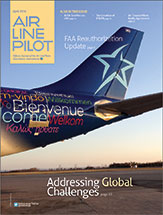
2016
ALPA exposed the threat from flag-of-convenience business models and lobbied for government enforcement of Open Skies bilateral aviation trade agreements, highlighting what it will take for U.S. and Canadian airlines to successfully compete in the global marketplace. The Association continues to advocate for the safe transport of lithium batteries and to remedy the carveout of cargo pilots from FAR Part 117, pushing for science-based flight, duty, and rest requirements for cargo operations.

